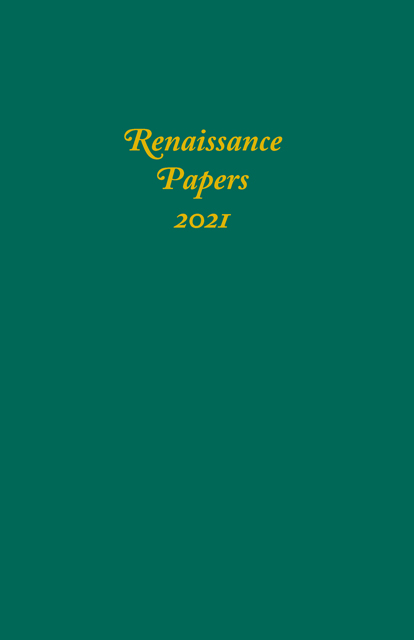Book contents
- Frontmatter
- Contents
- Dedication
- “Strange Serious Wantoning”: Early Modern Chess Manuals and the Ethics of Virtuous Subterfuge
- “Both Use and Art”: Motifs and Method in Astrophil and Stella
- Embodied Love(rs): Injury and Comedy in Mary Wroth’s Urania
- Edmund Spenser’s Automaton Alchemy: The Case of False Florimell
- Who Edited the 1571 Mirror for Magistrates?
- Statues Living and Conscious: Hermetic Statue-Magic in The Winter’s Tale
- Transmutation and Refinement: The Metaphysics of Conversion and Alchemy in Renaissance Spain
- The Twelve Inka and the Twelve Caesars: Reflections on an Early Modern Visual Theme in the Art of Colonial Peru
- Linguistics and Epistemology in Thomas Harriot’s North Atlantic World
- Assembling the King’s Body: Examining Holbein’s Portrait Techniques and the Fashioning of Henry VIII’s Image in the English Renaissance
- Molière’s L’École des Femmes between Shame and Guilt
Statues Living and Conscious: Hermetic Statue-Magic in The Winter’s Tale
Published online by Cambridge University Press: 17 December 2022
- Frontmatter
- Contents
- Dedication
- “Strange Serious Wantoning”: Early Modern Chess Manuals and the Ethics of Virtuous Subterfuge
- “Both Use and Art”: Motifs and Method in Astrophil and Stella
- Embodied Love(rs): Injury and Comedy in Mary Wroth’s Urania
- Edmund Spenser’s Automaton Alchemy: The Case of False Florimell
- Who Edited the 1571 Mirror for Magistrates?
- Statues Living and Conscious: Hermetic Statue-Magic in The Winter’s Tale
- Transmutation and Refinement: The Metaphysics of Conversion and Alchemy in Renaissance Spain
- The Twelve Inka and the Twelve Caesars: Reflections on an Early Modern Visual Theme in the Art of Colonial Peru
- Linguistics and Epistemology in Thomas Harriot’s North Atlantic World
- Assembling the King’s Body: Examining Holbein’s Portrait Techniques and the Fashioning of Henry VIII’s Image in the English Renaissance
- Molière’s L’École des Femmes between Shame and Guilt
Summary
In recent scholarship it has become typical to interpret the statue scene at the end of The Winter’s Tale as an elaborately staged trick, rather than as a genuine instance of the magical or miraculous. In this view, Hermione never really dies in the play, and the so-called statue of her at the end was never a statue at all, but rather Hermione herself standing very still. A small sampling of recent scholarship on this scene bears this out. B. J. Sokol refers to this event as Paulina’s “subterfuge” and as “the statue trick.” Later Sokol refers to Paulina’s so-called magic as “ludicrous and illusionary” and accuses her of “deceptions.” Naomi Rokotnitz simply states that Hermione “takes refuge in Paulina’s residence” after her supposed death, only acknowledging the existence of another view by stating, rather dismissively in an endnote: “Unless one argues that she was dead for sixteen years etc.” Likewise, J. H. P. Pafford states that Paulina “has kept Hermione hidden a short distance from the Court.” However, this view misunderstands the statue scene because it overlooks the influence of Hermetic magic on the scene, particularly statue-magic. When viewed in light of this influence, the statue scene becomes an instance of actual magic, rather than a mere illusion. Moreover, Shakespeare takes pains to sanctify the magic of the statue scene, situating it firmly within Christianity, and thus elevating it even beyond an instance of magic, to become an instance of the miraculous.
Hermetic magic was based on a collection of writings that were, at the time, attributed to Hermes Trismegistus, who was thought (incorrectly) to have been a contemporary of Moses, and whose ideas were therefore thought to have been a precursor both to Plato and to Christianity. In the late fifteenth century, the then available works of the Corpus Hermetica were translated into Latin by Marsilio Ficino, who saw in Hermeticism evidence of a natural magic that was compatible with Christianity because it was based on the harmonies and sympathies between objects and beings in the various spheres of the cosmos.
- Type
- Chapter
- Information
- Renaissance Papers 2021 , pp. 67 - 74Publisher: Boydell & BrewerPrint publication year: 2022



